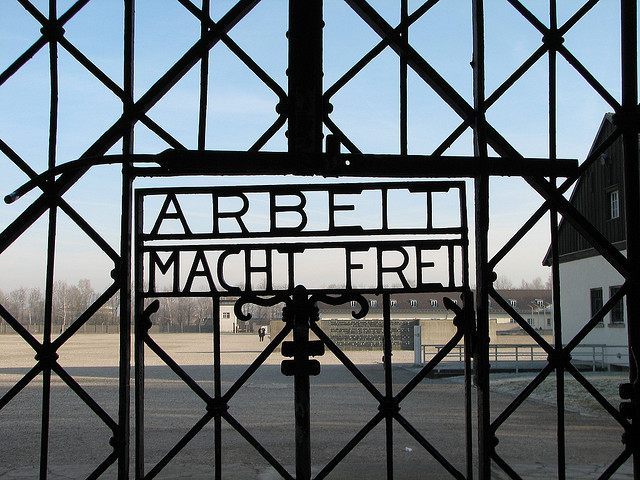DACHAU (GERMANY) (AFP) – An iron gate with the infamous slogan “Arbeit macht frei” (“Work will set you free”), stolen from the former Nazi concentration camp of Dachau in Germany two years ago, was returned to the site Wednesday.
The theft of the 100-kilo (220-pound) gate was reported in November 2014, sparking uproar, with German Chancellor Angela Merkel calling the crime “appalling”.
It was recovered outside Bergen in southwestern Norway last December following an anonymous tip-off.
At a ceremony marking the return of the gate, the president of the International Dachau Committee, Jean-Michel Thomas, urged investigators to press on with the probe into the theft.
He said he was “deeply shocked by the desecration of the site dedicated to the memory of all the victims of the camp, and to the respect for the 41,000 detainees who died” there.
He said the theft had aimed to “remove a trace, a symbol of all that is represented by the inscription ‘Arbeit Macht Frei’ on this gate of Dachau camp that some 210,000 detainees walked through from 1933 to 1945,” he said.
The gate was taken on a Saturday night between the rounds of security guards watching the site.
Police at the time said they were investigating whether neo-Nazis had committed the crime and offered a 10,000-euro ($11,000) reward for information that could solve the case.
No arrests have been made so far.
The Dachau camp near Munich opened in 1933, less than two months after Adolf Hitler became chancellor.
More than 200,000 political prisoners, Jews and others were incarcerated there by the Nazis and 41,000 died before US troops liberated it on April 29, 1945.
Today some 800,000 visitors from around the world visit the camp each year.
Last Sunday, US Vice President Mike Pence paid a sombre visit to the camp along with his wife and daughter.
Another sign with the same inscription at the former Nazi death camp of Auschwitz was stolen in 2009.
The mastermind of that theft, Swedish neo-Nazi Anders Hoegstroem, was caught and jailed for two and a half years.
The metal sign was eventually recovered, cut up into three pieces. A replica was displayed above the entrance until the original was restored in 2011.

COMMENTS
Please let us know if you're having issues with commenting.